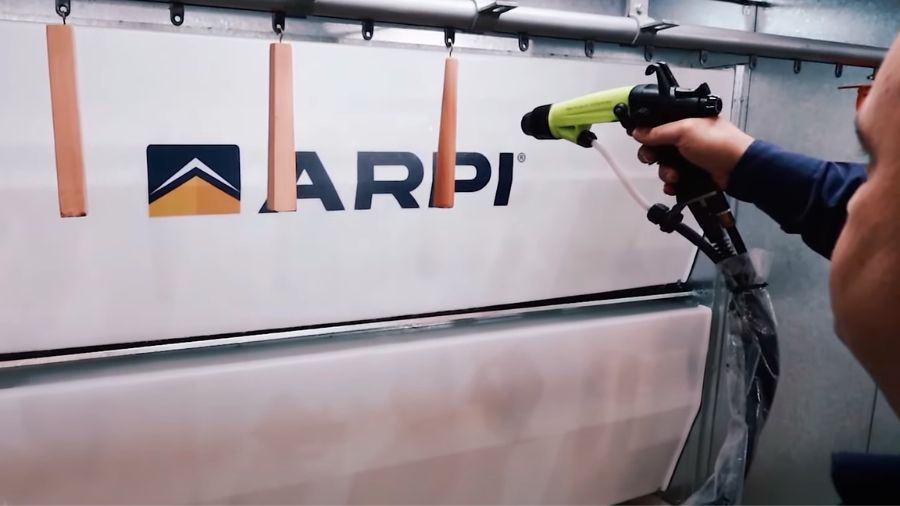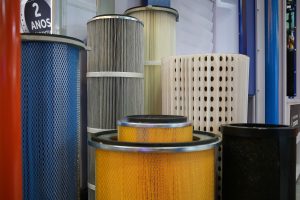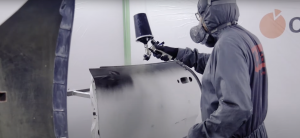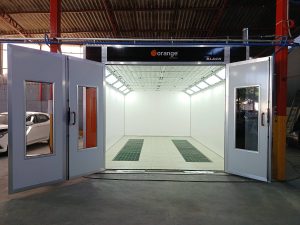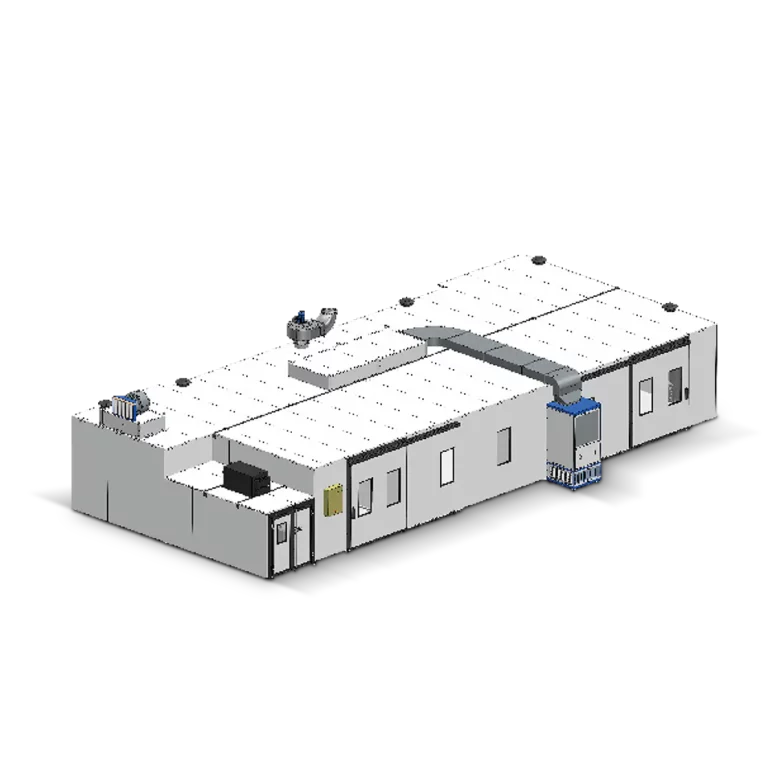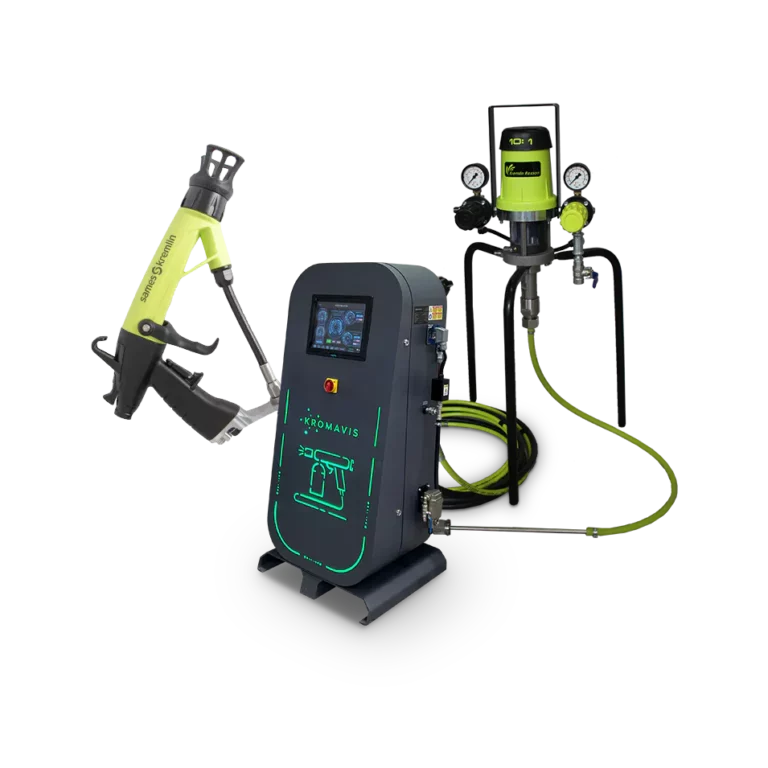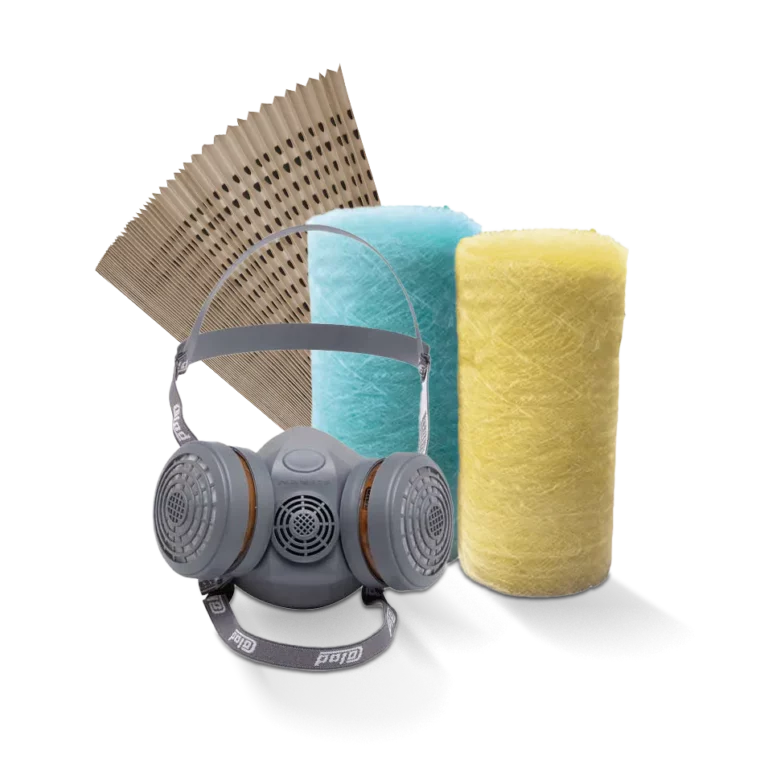Electrostatic painting is one of the most widely used finishing methods in industrial settings. This is because it achieves the best results in terms of quality, durability, and efficiency. But what is this type of painting, and how does it work?
What is electrostatic painting?
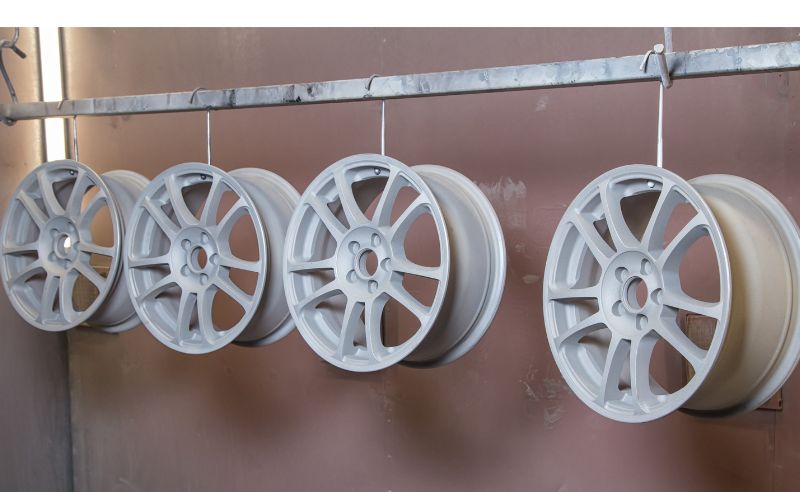
Created in the 1950s, the electrostatic painting model gained many followers in the following decades, especially in the industrial sector due to its high-quality finish. Widely used on metal structures such as iron, steel, and aluminum, technological advances also led to the use of electrostatic painting in the furniture industry.
This type of painting works by attracting substances with opposite polarization, like a magnet. Therefore, the substrate to be painted needs to have an electrical charge (usually positive), while the paint receives an opposite electrical charge (usually negative). This causes the paint to be attracted to the surface being painted. Furthermore, electrostatic application technology can be found in both liquid and powder coatings.
After this first stage, the piece must go through the curing process, which can take place either outdoors or inside an oven, always according to the type of paint applied.
What is an electrostatic painting system.
Because it is a type of painting with a high degree of technology, electrostatic painting is generally applied in industrial environments, where a chain of processes is followed to ensure the best application.
This process is composed of three stages: preparation, painting, and curing. Let's learn a little more about each of them.
Substrate preparation
As with any painting technique, the substrate to be electrostatically painted requires thorough preparation. In the case of electrostatic painting, the piece undergoes three processes:
- Washing and degreasing the part;
- Surface deoxidation;
- Anti-corrosion treatment.
The latter depends on the material being painted. If the item is aluminum, it will undergo chromating; if it's steel, it will undergo phosphating. It all depends on the surface being painted.
Paint application
Unlike conventional paint application, the paint applied in this painting method carries an electrostatic charge. Therefore, both the booth and the application equipment must be properly grounded to ensure efficient application and employee safety.
To electrically charge the paint, specialized paint guns are required. They have a nozzle that electrically charges the paint when it's sprayed. This technique allows you to paint hard-to-reach areas, as the spray attracts the paint particles.
Another advantage of electrostatic painting is that the paint particles from the overspray can be reused. The best painting systems have an exhaust mechanism that collects and stores this paint for reuse.
Cure
After receiving the paint, the parts move on to the final stage of electrostatic painting. Depending on the client's needs, curing can be induced naturally, outdoors, or through the use of drying ovens. It is important to pay attention at this stage of the process, as it will determine whether the part will receive the desired advantages, such as resistance to abrasion, corrosion, and UV rays.
This type of paint offers, among other advantages, speed in painting, as it allows for quick color changes, as well as a finish free of bubbles, stains, or runs.
To learn more about industrial painting, its main equipment, and benefits, access the rest of the [link/resource]. pagea, always with new and exclusive content.
